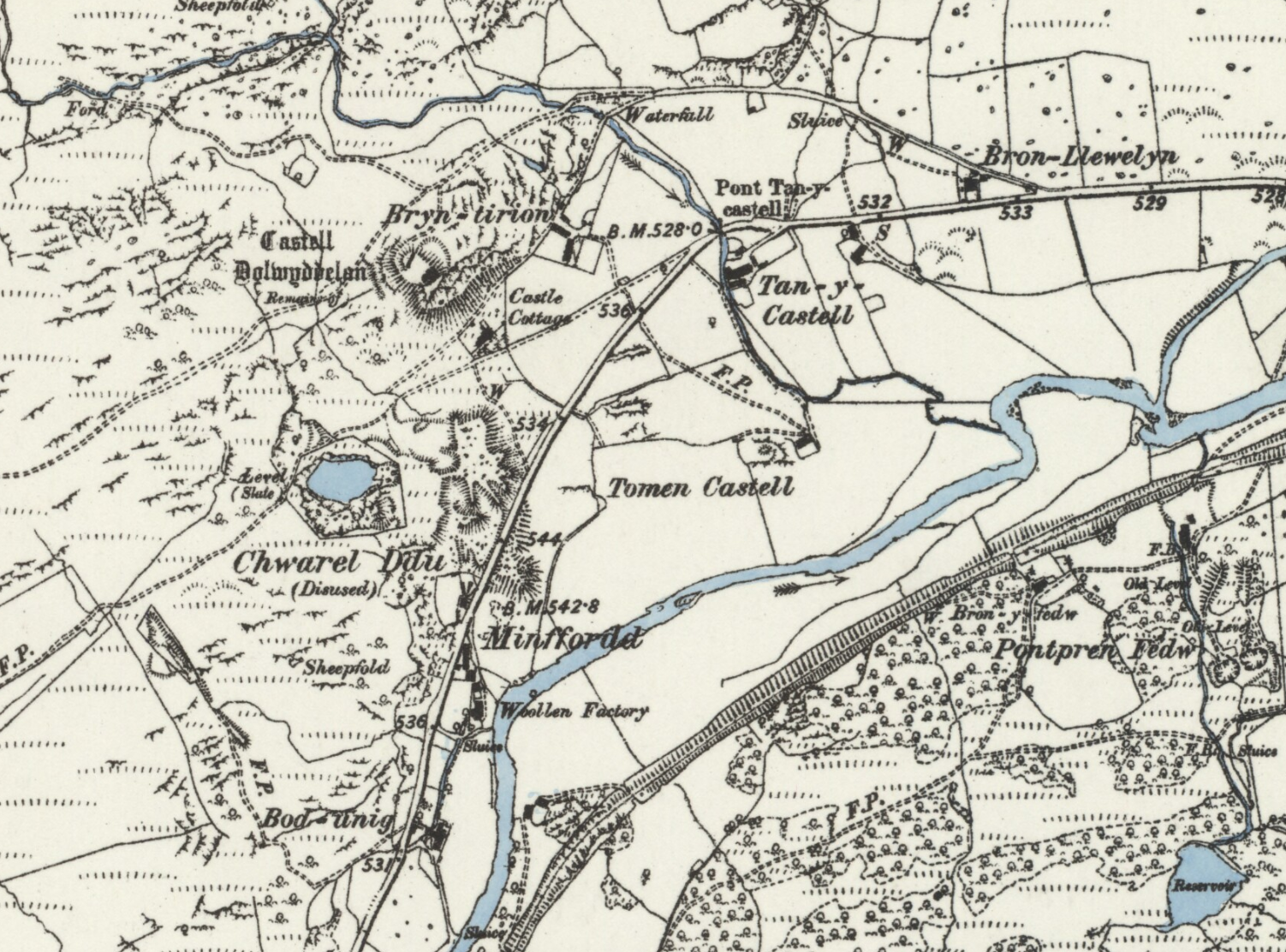Chwarel Ddu on:
[Wikipedia]
[Google]
[Amazon]
Chwarel Ddu quarry was the earliest
 The quarry is believed to have opened between 1800 and 1805. In 1810, the quarry was successful enough that the Gwydir Estate, who owned the land on which the quarry sat, constructed a cart road from the quarry to the Holyhead Road at
The quarry is believed to have opened between 1800 and 1805. In 1810, the quarry was successful enough that the Gwydir Estate, who owned the land on which the quarry sat, constructed a cart road from the quarry to the Holyhead Road at
slate quarry
The slate industry is the industry related to the extraction and processing of slate. Slate is either quarried from a ''slate quarry'' or reached by tunneling in a ''slate mine''. Common uses for slate include as a roofing material, a flooring ma ...
in the Lledr Valley
The Lledr Valley () is a valley in Snowdonia in north Wales. It runs from the top of the Crimea Pass, north of Blaenau Ffestiniog down to Betws-y-Coed.
The A470 road follows the line of the valley, as does the railway line from Blaenau Ffestin ...
. It was working before 1810, and continued in sporadic operation until the late 1920s. It is about west of Dolwyddelan
Dolwyddelan ( ; ; ) – in Victorian times, often spelled Dolyddelen – is a village and community in Conwy county borough, Wales, on the main A470 road between Blaenau Ffestiniog and Betws-y-Coed. As a community, the population of Do ...
, just beneath Dolwyddelan Castle
Dolwyddelan Castle ( ; cy, Castell Dolwyddelan; ) is a Welsh castle located near Dolwyddelan in Conwy County Borough in North Wales. It is thought to have been built in the early 13th century by Llywelyn the Great, Prince of Gwynedd and Wal ...
.
History
 The quarry is believed to have opened between 1800 and 1805. In 1810, the quarry was successful enough that the Gwydir Estate, who owned the land on which the quarry sat, constructed a cart road from the quarry to the Holyhead Road at
The quarry is believed to have opened between 1800 and 1805. In 1810, the quarry was successful enough that the Gwydir Estate, who owned the land on which the quarry sat, constructed a cart road from the quarry to the Holyhead Road at Conwy
Conwy (, ), previously known in English as Conway, is a walled market town, community and the administrative centre of Conwy County Borough in North Wales. The walled town and castle stand on the west bank of the River Conwy, facing Deganwy on ...
. This now forms part of the A470
The A470 (also named the Cardiff to Glan Conwy Trunk Road) is a trunk road in Wales. It is the country's longest road at and links the capital Cardiff on the south coast to Llandudno on the north coast. While previously one had to navigate t ...
. Despite this early success, the quarry only operated for short periods over the next few decade. For several years in the late 1850s, it produced significant amounts of slate, up to 700 tones per year. At this time a stationary steam engine
Stationary steam engines are fixed steam engines used for pumping or driving mills and factories, and for power generation. They are distinct from locomotive engines used on railways, traction engines for heavy steam haulage on roads, steam cars ...
was used to haul rock up from the open pit. By 1888 it was once more closed.
There was an attempt to re-open the quarry during the 1920s, and an oil engine was installed to replace the steam engine. A small number of quarrymen were employed, but the quarry had shut again by the end of the decade.
Like several other early slate quarries, Chwarel Ddu had an internal tramway using wooden rails with iron strapping on their surface. Several of the iron running surfaces were discovered in the 1980s when the quarry site was being levelled to make way for road improvements.
Geology
The quarry worked slate from theNod Glas Formation
The Nod Glas Formation (also known as the Nod Glas Black Shale, the Cadnant Shale, the Penarwel Mudstones or just Nod Glas) is an Ordovician lithostratigraphic group (a sequence of rock strata) in Mid Wales. The rock of the formation is made up of ...
which outcrops along the Conwy Valley. Through most of its length, the Nod Glas is black shale, but in the area around Dolwyddelan a syncline
In structural geology, a syncline is a fold with younger layers closer to the center of the structure, whereas an anticline is the inverse of a syncline. A synclinorium (plural synclinoriums or synclinoria) is a large syncline with superimpose ...
compressed the shales and it developed enough cleavage to be worked as slate.
References
{{Welsh Slate Quarries Slate mines in Conwy County Borough Railway inclines in Wales Dolwyddelan